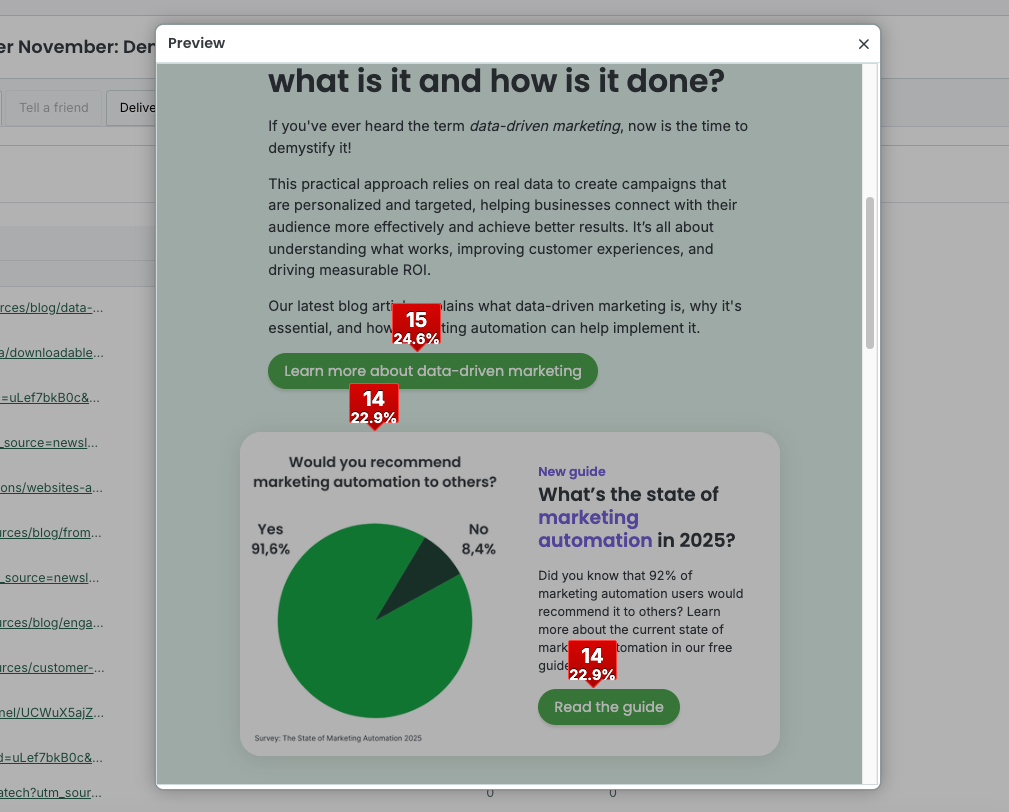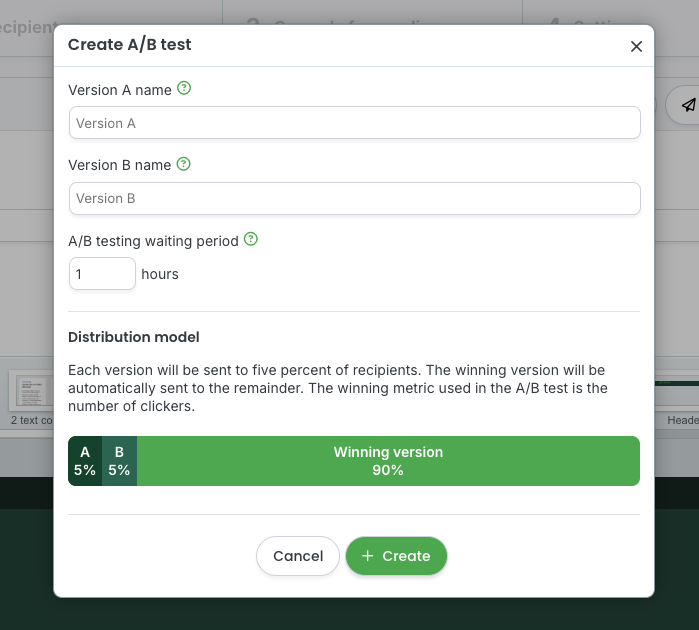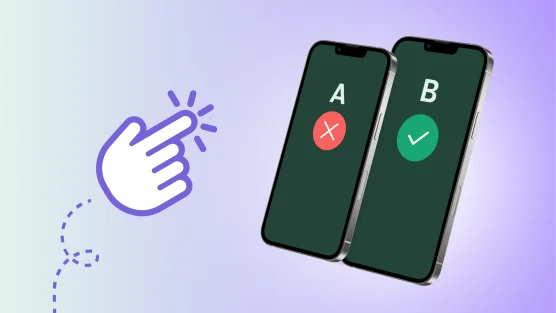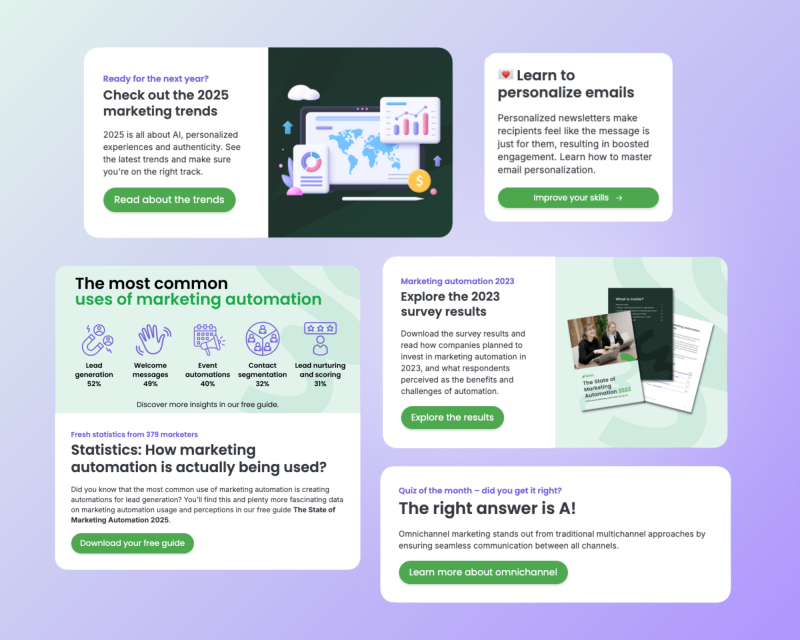Are you wondering what type of newsletter content your audience wants to read? Perhaps you’re already tracking multiple email marketing metrics and have gathered valuable data to better understand your audience.
You can take your data-driven email marketing even further by using A/B testing to discover the most effective content. A/B testing for newsletters is a method where two different versions of the same email are compared to determine which one performs better in achieving the desired goal.
By A/B testing your newsletters, you can identify the content that best engages your recipients and prompts them to open the email or click a link. Ultimately, the version that receives more clicks in the test is sent to the majority of recipients to maximize results.
In this article, we’ll explore A/B testing for newsletters through the following topics:
- How A/B testing works in practice
- What elements you can A/B test
- Analyzing the results
- Tips for success
Let's get started!
1. How A/B testing works in practice
Key terms
Let's first go through some essential terminology.
- Test duration or waiting time: The time window during which the test takes place. Once the test period ends, the newsletter software reviews the results and sends the winning version – whichever received more opens or clicks – to the remaining recipients. The test duration is often customizable but should be at least one hour.
- Test group: Recipients are divided into two equally sized test groups – one receives version A, and the other receives version B.
- Open rate: The percentage of recipients who opened the newsletter.
- Click-through rate (CTR): The percentage of those who opened the email and clicked on at least one link within the newsletter.

LianaMailer’s heatmap displays newsletter click data.
The one-variable principle
How can you ensure successful A/B testing and generate reliable results? To generate truly useful data for improving your email marketing, it’s essential to follow the one-variable principle.
As the name suggests, the one-variable principle means modifying and testing only one element at a time. This way, you can accurately determine which change influenced the outcome. If you test both a subheading and a call-to-action in the same section simultaneously, you won’t know which one ultimately drove the clicks.
Create two versions of your newsletter and choose one element to test. Keep all other variables the same. Once the test concludes, analyze the results and apply your insights when crafting your next newsletter.
Test group size
When conducting an A/B test, ensure that your email list has enough recipients. Test groups typically cover 10–20% of the recipients, and the reliability of the test largely depends on having a sufficiently large test group. The winning version will be sent to the majority of recipients once the waiting time is over. The larger your recipient list, the smaller the percentage of recipients should be chosen for the test group, and vice versa.
The timing of your newsletter send-out also impacts the success of the test. A newsletter sent early in the morning or late at night is unlikely to reach a significant sample for testing purposes. Therefore, schedule your email to be sent at a time when your recipients are most likely to be checking their emails.

In LianaMailer's distribution model, each version is sent to 5% of the recipients.
2. What elements can you A/B test
Want a quick answer? You can actually test nearly all elements of your newsletter. But to save you time, let’s go through what you should consider A/B testing.
Newsletter subject line
Try A/B testing two different subject lines by highlighting different aspects of your newsletter’s content. You could also experiment with varying tones, adding emojis to one version, or testing whether a shorter subject line performs better than a longer one.
Version B: Spring New Arrivals in Earthy Tones | Explore Our Unisex Collection | Enjoy Loyalty Discounts on Selected Products
Preheader
The preheader is the snippet of text that appears after the newsletter subject line. You can customize it to give recipients a preview of the content, encouraging them to open the email. Try testing different versions in the same way you would test the subject line: experiment with tone, length, and the use of emojis.
Section order and subheadings
The first sections of your newsletter naturally attract the most attention. You can experiment with rearranging the sections and test how it affects click rates: have you managed to place the most compelling content at the beginning, or does the layout play a significant role?
Feel free to test different subheadings within the content of your newsletter as well. Recipients often skim through the most interesting sections and decide within seconds whether to click and read more. Therefore, it’s important to optimize both the heading and the descriptive text beneath it.
CTA buttons
Do you know what type of call-to-action (CTA) encourages your readers to click? The importance of the CTA is greater than its size. A concise and descriptive call-to-action often works best, but by A/B testing different versions, you’ll get a better understanding of what resonates with your audience.
Versio B: Click to shop!
Versio B: Dive deeper into the topic
Experiment with different CTAs to see which one encourages the recipient to click.
Images
Test the number and style of images in your newsletters. For example, you can A/B test a section with an image versus without an image to see which one gets more clicks. You can also test the same section with two different images.
Amount of text
Avoid cramming too much text into your newsletter, as, as mentioned, recipients often skim through the most interesting highlights. If you're unsure about the optimal text length, try A/B testing different options.
3. Analyzing the results
Start analyzing the results by selecting the metric based on the element you’ve tested. When testing your newsletter’s subject line, the version with the higher open rate will be sent to the remaining recipients. For content elements, clicks will determine the winning version.
Open rate
The open rate is a good metric when testing the effectiveness of the subject line or preheader. It provides valuable insights into which subject line encourages recipients to open your email.
Test either the subject line or preheader at a time to get precise data. Ultimately, the recipient decides whether to open or skip your email based on the subject line, so it’s worth spending time crafting an engaging one.
Click-through rate (CTR)
Track the click-through rate when testing elements such as section subheadings, CTA buttons, or other content. The newsletter report will show which version received more clicks and how many. The click-through rate provides an indication of how well different content elements resonate with your target audience.
4. Tips for success
As with most marketing efforts, A/B testing doesn’t offer quick wins but requires some patience. The goal is to optimize your newsletter communication and email marketing for better results over time. It’s also important to remember that not all results can be generalized to all target audiences, especially if you have multiple, very different groups.
Keep these points in mind when testing:
-
Send and waiting time: Ensure that you send your newsletter at a time when you can gather a comprehensive test sample.
-
Element to test: Modify one element at a time so that analyzing results is easy and consistent. Make significant changes, such as to the subject line or CTA buttons.
-
The right metrics: Choose the appropriate metric based on the element you're A/B testing.
-
Results: Conduct systematic testing and apply the insights you gain to your future campaigns.
Optimize your email marketing with LianaMailer
The newsletter tool LianaMailer is ideal for effective email marketing: discover the best content through A/B testing and take advantage of diverse content features to engage your audience.




![How to Get Started with Podcasts? [Infographic]](/media/blog/podcast-article/cache/starting-your-own-podcast-article-cover-378x214,c.png)